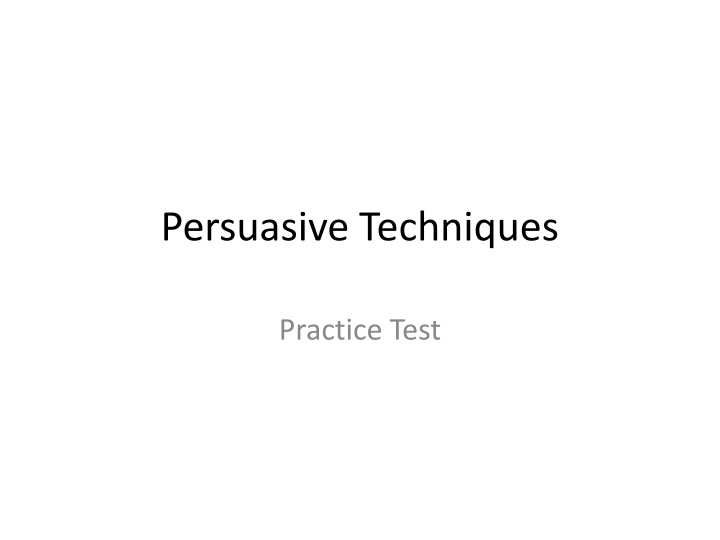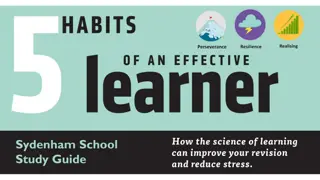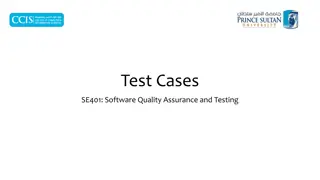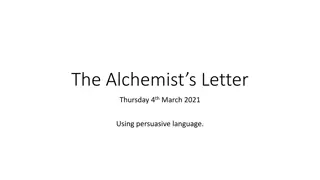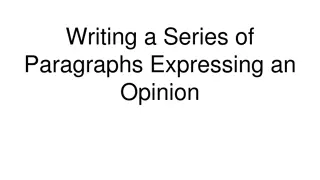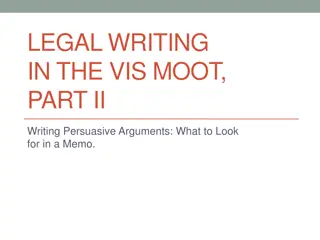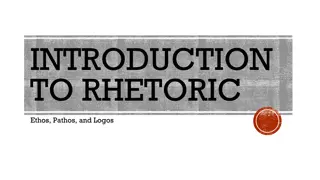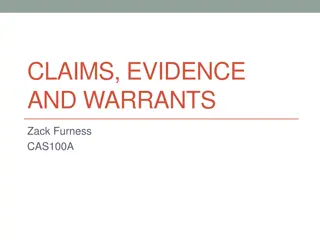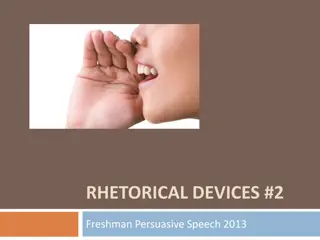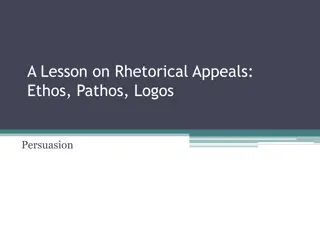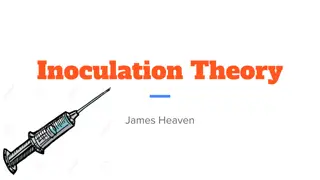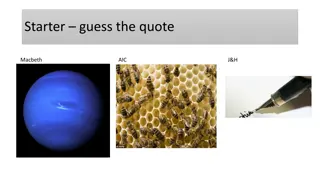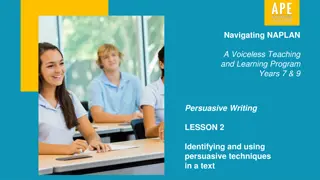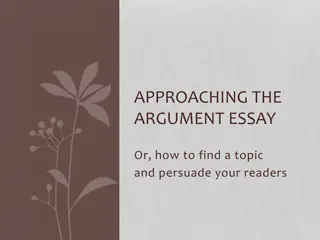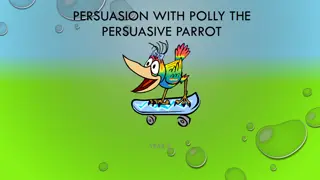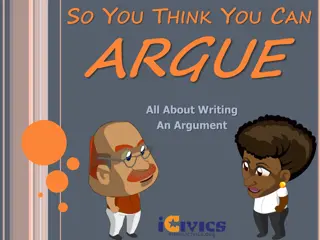Mastering Persuasive Techniques: Practice Test Insights
Explore the art of persuasion through practice test scenarios covering logical, ethical, and emotional appeals, with examples and explanations. Identify various persuasive techniques like logical appeals, ethical appeals, and appeal to loyalty, while also recognizing loaded language in persuasive messages.
Download Presentation

Please find below an Image/Link to download the presentation.
The content on the website is provided AS IS for your information and personal use only. It may not be sold, licensed, or shared on other websites without obtaining consent from the author.If you encounter any issues during the download, it is possible that the publisher has removed the file from their server.
You are allowed to download the files provided on this website for personal or commercial use, subject to the condition that they are used lawfully. All files are the property of their respective owners.
The content on the website is provided AS IS for your information and personal use only. It may not be sold, licensed, or shared on other websites without obtaining consent from the author.
E N D
Presentation Transcript
Persuasive Techniques Practice Test
Which sentence contains a logical appeal? A. The New World Encyclopedia is the best encyclopedia on the market today. B. It is complete, affordable, and up-to-date. It s only $89.95, and our online edition is always being revised! C. All parents who care about their children s education should invest in this terrific product. D. Mom Pam Wise says, My kids love this encyclopedia!
ANSWER B. It is complete, affordable, and up-to-date. It s only $89.95, and our online edition is always being revised! These are facts about the encyclopedia, given to support the claim, so this sentence contains a logical appeal!
Which sentence contains an ethical appeal? A. The New World Encyclopedia is the best encyclopedia on the market today. B. It is complete, affordable, and up-to-date. C. All parents who care about their children s education should invest in this terrific product. D. Mom Pam Wise says My kids love this encyclopedia!
ANSWER C. All parents who care about their children s education should invest in this terrific product. This sentence appeals to parents belief that children deserve a good education.
What is the main persuasive appeal used here Texas-Brand cookies are baked by and for proud Texans! We use local ingredients, local workers, and local stores to bring our delicious cookies right into your Texas home. Now you can show how much you love your state in a scrumptious way! A. Appeal to authority B. Appeal to loyalty C. Bandwagon appeal D. Snob appeal
ANSWER B. Appeal to loyalty This passage uses loyalty to a particular group (people in Texas-to persuade others to buy a product)
What words in this passage are examples of loaded language? Texas brand cookies are baked by and for proud Texans! We use local ingredients, local workers, and local stores to bring our delicious cookies right into your Texas home. Now you can show how much you love your state-in a scrumptious way! A. Ingredients, workers, stores B. Texas-Brand, Texans, Texas home C. proud, delicious, scrumptious D. support your state
ANSWER C. proud, delicious, scrumptious These words have positive connotations. They are purr words!
Which of the following are necessary parts of a logical argument? A. Logical fallacies B. Solid reasons and evidence C. Name-calling and circular reasoning D. Hasty generalizations
ANSWER B. Solid reasons and evidence For an argument to be logical, it needs solid reasons and evidence to support the claim
A logical fallacy is - A. Reasoning that may seem to make sense but is false B. A logical way of misleading readers and listeners C. A sneaky way of presenting supporting evidence D. Reasoning that uses too much evidence as support
ANSWER A. Reasoning that may seem to make sense but is false A fallacy appears to make sense on the surface, but upon closer inspection is not logical
A stereotype differs from a hasty generalization in that a stereotype- A. Is based on insufficient evidence B. Sometimes deals with people C. Is too broad a statement D. Always deals with groups of individuals
ANSWER D. Always deals with groups of individuals Some hasty generalizations are about people, but stereotypes always involve groups of individuals
Which of the following is an example of name-calling? A. I-not Lynn-should be president because I ve been vice-president before. B Alan can t help row because he s not strong enough. C. Mark isn t the right man for the job because he s a coward. D. Mom said not to touch the baby because I m sick.
ANSWER C. Mark isn t the right man for the job because he s a coward. Instead of giving reasons why Mark isn t right for the job, this speaker just calls him names.
Which of these describes the parts of an argument? A. Evidence and support B. Evidence and logical appeals C. Evidence and a claim D. Evidence and emotional appeals
ANSWER Evidence and a claim An argument is a claim supported by reasons and evidence
Which of these sounds like the most logical to include in an argument? A. The first ten amendments to our Constitution, known collectively as the Bill of Rights, are necessary because they are needed. B. As times change, our Bill of Rights could use re-examining and updating. Most people in Europe aren t smart enough to learn English. Today s teenage fashions are responsible for climate change.
Answer: B. As times change, our Bill of Rights could use re-examining and updating. This could be an author s claim
Which of these is an example of a hasty generalization? A. Either he supports our position completely , or he wants us to fail. B. Cats are more pleasant than dogs because cats have better personalities. C. She thinks that curfews are a good idea, but that s because she s a dull person. D. Cheerleaders spend a lot of money on their hair and makeup.
Answer: D. Cheerleaders spend a lot of money on their hair and makeup. This statement might be true of some cheerleaders, but that doesn t prove it s true of all.
Which of the following are examples of purr words ? A. Dress, jeans, t-shirt B. Walk, dance, jump C. Scientific, results, studies D. Cozy, snug, safe
Answer: D. Cozy, snug, safe These are words that have a positive meaning
